Car retailers' aftersales departments need to take action to keep pace with dramatic changes in the sector such as electrification, automation and digitisation.
The biggest challenge facing retailers is the skill shortage exacerbated by the pandemic which saw technicians furloughed, with many not returning, and a lack of investment in training together with the Brexit exodus.
 Steve Nash, chief executive of the Institute of the Motor Industry (IMI), says: “The workshops are busy and there’s no instant fix. It always takes time for people to realise that you just can’t steal these people from someone else. Eventually, you are going to have to recruit and train people.”
Steve Nash, chief executive of the Institute of the Motor Industry (IMI), says: “The workshops are busy and there’s no instant fix. It always takes time for people to realise that you just can’t steal these people from someone else. Eventually, you are going to have to recruit and train people.”
By 2030, the IMI forecasts 90,000 electric vehicle (EV)-qualified technicians will be required. Yet, at the current rate of training compared with the increase of EV sales, a shortfall of 35,700 is projected with concerns the gap will grow.
By 2020, 15,400 technicians had achieved the IMI’s EV standard TechSafe qualification, just 6.5% of the 250,000 working in vehicle servicing and repair.
The IMI is lobbying Government for £15 million funding from its green occupations pot to help redress the balance.
 Sue Robinson, chief executive of the National Franchised Dealers Association (NFDA), which represents franchised car and commercial vehicle dealers in the UK, says: “The motor industry has been facing a shortage of technicians and, specifically, there will be a need for more EV technicians as EV training follows on from traditional Internal Combustion Engine (ICE) Level 3 apprenticeships.
Sue Robinson, chief executive of the National Franchised Dealers Association (NFDA), which represents franchised car and commercial vehicle dealers in the UK, says: “The motor industry has been facing a shortage of technicians and, specifically, there will be a need for more EV technicians as EV training follows on from traditional Internal Combustion Engine (ICE) Level 3 apprenticeships.
As consumer demand for EVs grows, franchised dealers will continue to adapt to ensure that there are enough EV-trained technicians in dealerships.”
On a brighter note, for Nash, the rapidly advancing technology on vehicles and other changes, such as the introduction of the agency model, means automotive retailing can be ‘repackaged’, making it a more attractive option, particularly with the increasing need for qualifications and accreditation.
He says: “The career and earning opportunities in automotive are immense. The rapidly-evolving technology is incredibly exciting, putting us on the same level as other tech-led sectors.
“Now we have to make sure that message is getting out. And we have to ensure we are both reaching those who already have a technical aptitude, but want to find a new challenge, and the parents and educators who influence the next generation.”
The IMI’s diversity and inclusion taskforce, which published its interim findings in January with the full report due next month (see News Insight feature on page 8), urges the sector to cast its net wider including people from all ethnicities and those with physical and invisible disabilities, to replenish its talent pool.
Nash says: “Females make up 52% of the population, so that’s an immediate challenge we have to address.”
He adds: “We must appeal to every section of society – as a career route and as a customer.”
Robinson says: “The changing skill set has required the industry to engage with a different talent pool, often with experience from outside of the sector. The subject of diversity in the workplace has become even more important and franchised dealers are now utilising innovative ways to recruit, including open days where HR managers do not even look at CVs.”
While the past two years have seen apprentices furloughed and not receiving the mentoring and practical experience required, apprenticeship numbers are rising, although not yet at pre-pandemic levels.
Robinson says: “Employee retention has never been more important. COVID-related challenges have hit technical apprentices at different stages within their learning journeys, with a number of them being the first furloughed and last to return, which has impacted technicians’ productivity.”
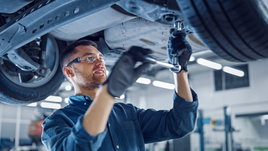 But Nash warns: “Technicians used to come into the role and do it for life, but youngsters are less inclined to do that now and that means you need to keep the pipeline fed.”
But Nash warns: “Technicians used to come into the role and do it for life, but youngsters are less inclined to do that now and that means you need to keep the pipeline fed.”
As well as people, retailers need the tools and, particularly digital options, both online and in-store to better equip aftersales departments and, crucially, redirect human resource where it’s needed most to address the need for greater flexibility in the workplace as customers switch to digital communications and tools.
Robinson says: “Due to the changes in consumer behaviour, retailers need to ensure they are offering an omnichannel approach, which can be tailored dependent on the customer’s preferences.
Some dealers have created fully digitalised and contactless service drop-offs and collections to keep up with the evolution of consumer demand.
This highlights the need for increasingly flexible working models and may also result in staff members doing jobs and undertaking tasks that differ from their ‘traditional roles’, for example, technicians making videos.”
That view is echoed by Autino, the company behind CustomerLounge, an aftersales communication platform that enables customers to chat with service advisors in real time.
Its research, undertaken in 2020, found the most important factor in the service experience is communication. Findings include four-fifths (80%) of service advisors who said the majority of calls they fielded were customers requesting an update on their vehicle in the workshop.
CustomerLounge head of marketing Alex Knight says: “You don’t need as many people staffing phones for inbound calls (we can cut by 30%-plus), and you don’t need to spend valuable advisor time on outbound calls as it can be done via message.
“A lot of the resource bottlenecking comes because it’s a reactive landscape. Being proactive, with smart automated messages, status updates and more helps to avoid those frustration points before they exist.”
FIVE Ts FOR RETAILER RESOURCING
 Consultant Karl Davis, owner of Coachworks Consulting since 2002, refers to the five ‘Ts’ of retailer resourcing – turnover, team, time, tech and together.
Consultant Karl Davis, owner of Coachworks Consulting since 2002, refers to the five ‘Ts’ of retailer resourcing – turnover, team, time, tech and together.
Turnover
Pay close attention to the changing landscape that is electric vehicles (EVs) and match the number of customers with the types of vehicles and skill set of teams to optimise resource levels with anticipated revenue.
He says: “That’s not easy because, in the medium-to-long-term, revenue will come under pressure because EVs require less maintenance than ICEs and, while we might be in a state of flux, we have to understand the real opportunity that’s available right now, including the missed opportunity and the latent opportunity sitting in our CRM.”
Team
Davis advises retailers to turn their biggest cost into their greatest asset. With training often amounting to filling mandated spaces on manufacturer courses rather than what the business really needs, Davis urges dealers to prepare their workforce for the future, particularly in EV service and maintenance.
Meanwhile, during the pandemic the average retailer reduced their overall headcount by about 20%, with many who had a taste of a different world during furlough, deciding not to come back.
“It has gone straight back to being an employees’ market,” Davis says. “You need to be a respected employer with a strong employer brand and the top performers really get this.”
Time
Timeliness and time to complete the task is essential, including an advanced review of the connected systems, the previous eVHC and the job card booking while allowing enough time to see each customer will boost profitability and customer satisfaction.
He says: “You will only get optimum revenue, profitability and customer experience if you have the right number of people, with the right skill sets and behaviours doing the right things.”
Technology
Retailers need the right technology in place as well as the skill sets to use it properly, with a digital CRM solution that will intelligently manage the contact process.
Staff need to see the full view of the customer in one place with integrations with the likes of the DMS and the DVSA.
He says: “Technology is an accelerator – of good people and strong processes.”
Together
Finally, Davis says retailers need to bring everything together into one simple, coherent plan.

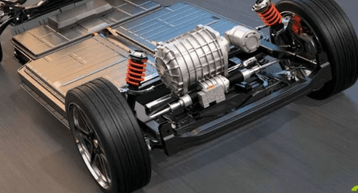

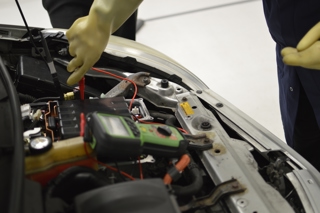

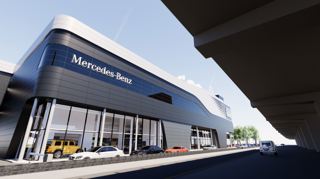
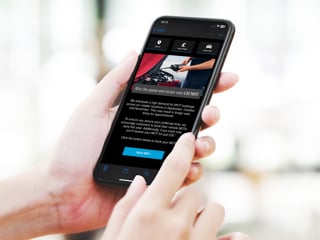
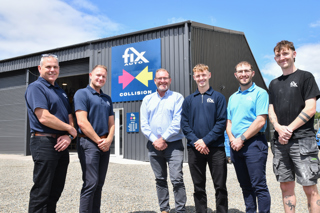










Login to comment
Comments
No comments have been made yet.